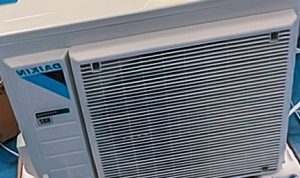 Air conditioners, and indeed all refrigeration units, work in basically the same way. They all make use of a type of physics known as thermodynamics, which, spelt out means, the way that heat moves. Thermodynamics is involved in many fields of science and engineering and helps us to understand more about the macroscopic world, as well as the chemical bonds that hold molecules together. Now if we can just apply this when we get our air conditioners serviced in Melbourne, am I right?… Is this thing on?
Air conditioners, and indeed all refrigeration units, work in basically the same way. They all make use of a type of physics known as thermodynamics, which, spelt out means, the way that heat moves. Thermodynamics is involved in many fields of science and engineering and helps us to understand more about the macroscopic world, as well as the chemical bonds that hold molecules together. Now if we can just apply this when we get our air conditioners serviced in Melbourne, am I right?… Is this thing on?
Anyway, air conditioners take advantage of thermodynamics to create hotter or colder rooms. The basic principle involves taking the heat from one room (living room, bedroom, car interior) and taking it to another (generally outdoors), thus making the first room colder. Here we go, diving into the fun filled world of science, once again.
An air conditioner is made up of only a few core components, that all of them share, and help to drive the heat from one place to another. Heat pumps transfer heat energy from colder places to warmer places, which goes against the natural order of heat, which usually goes from hot to cold. Extra energy is needed to accomplish this feat, which is where this loophole in thermodynamics comes in. Have I lost you yet? I hope you think twice next time you get upset about your broken air conditioning in your Melbourne home.
Science aside: Latent heat is the release of absorption of heat energy during processes that don’t change temperature. This isn’t normally the case, because normally heat energy only moves when there is a change in temperature. The classic condition of latent heat is a phase change i.e. going from one state of matter to another. In the case of air cons, we are taking what’s called a “refrigerant” and changing it from a liquid to a gas, and then back again. Another note is that the boiling points of materials changes depending on the pressure of its environment. Low pressure means that it can escape these bonds easier and therefore boils at low temperature. The opposite is true for high pressure, therefore high boiling point.
Refrigerants get pumped into low pressure areas, (at the inside section) which means that it then boils right away. This phase change absorbs latent heat from surroundings (the living room). The gaseous refrigerant moves through a compressor to get to high pressure by the time it reaches the outside area. This high pressure reverses the phase change, making it go back to a liquid and release all the latent heat energy absorbed. This is released into the outside environment, thus creating a flow of cold to hot from inside to outside. Boom, SCIENCE!